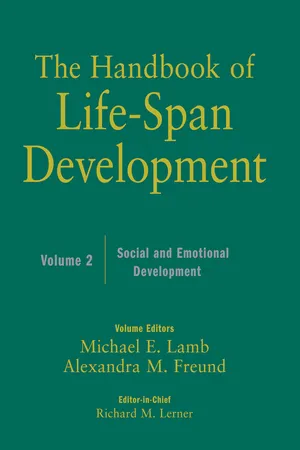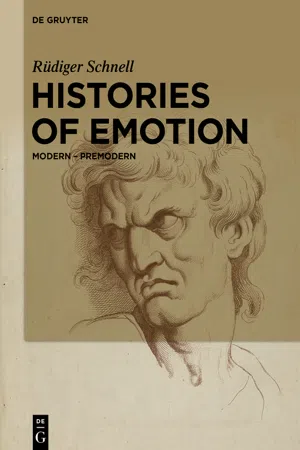Psychology
Emotion Research
Emotion research in psychology focuses on understanding the nature, expression, and impact of emotions on human behavior and well-being. It encompasses the study of emotional processes, such as how emotions are experienced, expressed, and regulated, as well as the role of emotions in cognition, decision-making, and social interactions. Researchers use various methods, including behavioral observations, physiological measurements, and self-report assessments, to investigate emotions.
Written by Perlego with AI-assistance
3 Key excerpts on "Emotion Research"
Learn about this page
Index pages curate the most relevant extracts from our library of academic textbooks. They’ve been created using an in-house natural language model (NLM), each adding context and meaning to key research topics.
- eBook - ePub
- Liz Yeomans(Author)
- 2019(Publication Date)
- Routledge(Publisher)
Appendix Researching emotions: from theory to methodologyEmotions in society and culture: perspectives and key concepts
Introduction
The concept of emotion in the literature reveals a complex field that is influenced by a range of disciplines: there is no single theory of emotion. Calhoun and Solomon ask us to exercise caution in asking, ‘What is an emotion?’ as if ‘emotions were a set of homogenous phenomena’ (1984, p. 24). Kagan (2007, p. 1) concurs that ‘the answers offered are riddled with ambiguity and do not enjoy the more consensual, transparent meanings of such concepts as velocity and heat’. Emotion is therefore a contested concept. Social and cultural perspectives, which contextualise this study, conceive emotions as socially constructed and emerging through social interaction: they are a product of socialisation within a culture (learning how to feel and interpret) and participation in social structures, and are subject to flux and change, depending on different social interactions in different social and cultural contexts. Within organisations, socio-cultural perspectives are concerned with the everyday constructions of emotion and meaning by organisational members. However, it is also important to examine the wider literature on emotion, since psychological and biological perspectives contribute to Hochschild’s social theory of emotion discussed in Chapter 2 . Furthermore, ‘common sense’ or popular understandings of emotion are likely to influence practitioners’ discourse.I begin by examining common sense understandings of emotion that shape everyday discourse. Such discourse associates emotion with biology; they are ‘feminine’ and have to be ‘contained’ or controlled rather than accepted as integral to what it means to be human. This ‘containment’ of emotion is particularly relevant to the professional context where the norms of emotional constraint are likely to differ according to status, gender, and context (Domagalski and Steelman, 2007). The norms of emotional expression are important to understanding occupational culture (Bloch, 2012). The discussion then moves on to debates surrounding the categorisations of emotion, including the problem of labelling emotions in isolation from their social contexts. The distinctions between the terms ‘emotion’ and ‘affect’ are then discussed, including the limitations of using the terms ‘positive affect’ and ‘negative affect’ in social situations (Hochschild, 1983, p. 202). There follows a brief discussion of the organisational behaviour (OB) literature on emotion, and its functionalist emphasis, before introducing the social theories of emotion that form the basis of my analyses. - eBook - ePub
The Handbook of Life-Span Development, Volume 2
Social and Emotional Development
- (Author)
- 2010(Publication Date)
- Wiley(Publisher)
operation, attention, and so forth remain highly global, as is typical of psychological constructs. They are not actual constituents with interactions that can be measured over time. It is this kind of problem that has steered post-behaviorist psychologists out of their dedication to cognitive constructs to the study of biological factors, whether in the realm of psychophysiology, genetics, evolutionary psychology, or, of particular importance for this chapter, neuroscience (Thompson, Lewis, & Calkins, 2008). Only by looking to the biological constituents underlying psychological phenomena can one find the precision required for a detailed model—a model that can retain the power and complexity of DS principles such as feedback, coupling, attractors, and so forth, without becoming metaphorical. Thus, in the next section, and again in the latter half of each of the following four sections, we examine the neurobiology of emotion regulation. The goal for the next section is to resolve the ambiguities and contradictions that keep coming up when theorists attempt to explain ER by parsing its cognitive and emotional components. The first and most important point is that cognitive operations and emotional operations simply cannot be distinguished in the brain. It appears that the idea of emotion regulation will have to shed more of its baggage before it can be captured with precision.NEURAL INVESTIGATIONS OF EMOTION REGULATION
Contemporary investigators of emotion regulation attempt to differentiate cognitive and emotional processes in various ways. For example, they discuss high-level processes versus low-level processes or top-down versus bottom-up processes. This terminology has been used to build an influential model of emotion regulation (Ochsner & Gross, 2005, 2007), with an emphasis on the intermingling of these two kinds of regulatory activities. These models view cognitive functions as “high-level.” The problem is that emotional states can also be high-level. They too can affect processing in a top-down fashion, as when depression biases perception, attention, and learning. Moreover, cognitive processes can assemble themselves in a bottom-up direction, as when associations, norm selection, and contextual features are recruited in decision making (e.g., Yeh & Barsalou, 2006). Zelazo and colleagues (e.g., Kerr & Zelazo, 2004) differentiate hot EF from cool EF, the former identified as dealing with emotionally pressing issues and the latter as related to more reflective or abstract reasoning processes. However, these authors have had a difficult time providing a precise delineation and, in the words of Ochsner and Gross (2005, p. 245), regulatory processes used to control emotion are “strikingly similar” to those recruited for “cold” (i.e., cognitive) forms of control. - eBook - ePub
Histories of Emotion
Modern – Premodern
- Rüdiger Schnell(Author)
- 2020(Publication Date)
- De Gruyter(Publisher)
VIII Perspectives of Research on the History of EmotionTo understand the current state of historical Emotion Research, it is necessary to pose the following basic question: what interests and impulses have fostered the emotional turn in the humanities? That there is no easy answer to this question, given the mass and confusion of factors involved,1 is itself an explanation for why such a wide range of themes, cognitive interests, and lines of enquiry are mixed together in historical Emotion Research. Since the 1980s and 1990s, an impressive number of historical studies – too many to count – have been published that all claim to deal with emotion.2 But what do these studies mean by the term emotion? If one takes what their authors say at face value, nearly all of them aim to understand the emotional experiences of our predecessors: what did they ‘really’ feel when they loved, hated, envied, were ashamed of themselves, were happy or angry? Did they have the same emotion that we feel today under similar circumstances, or was it something different? Studying ‘real’ feelings is thus bound up with the idea that they may have changed.This tight connection between what are actually two separate matters has led to an irresolvable clash in the objectives of emotion historians. On the one hand, like all historians they know that they cannot report “wie es eigentlich gewesen ist” (Leopold von Ranke); on the other hand, they need to be able to describe what people in the past really felt in order to demonstrate the historicity of emotions. Insistence on this objective, and the impossibility of actually realising it, has led to the diffuse state of current historical Emotion Research. Studies of emotion that pursue quite traditional lines of argument, for example, and that have nothing to do with the emotional turn, claim to be indebted to a new interest in the question of emotions.3


